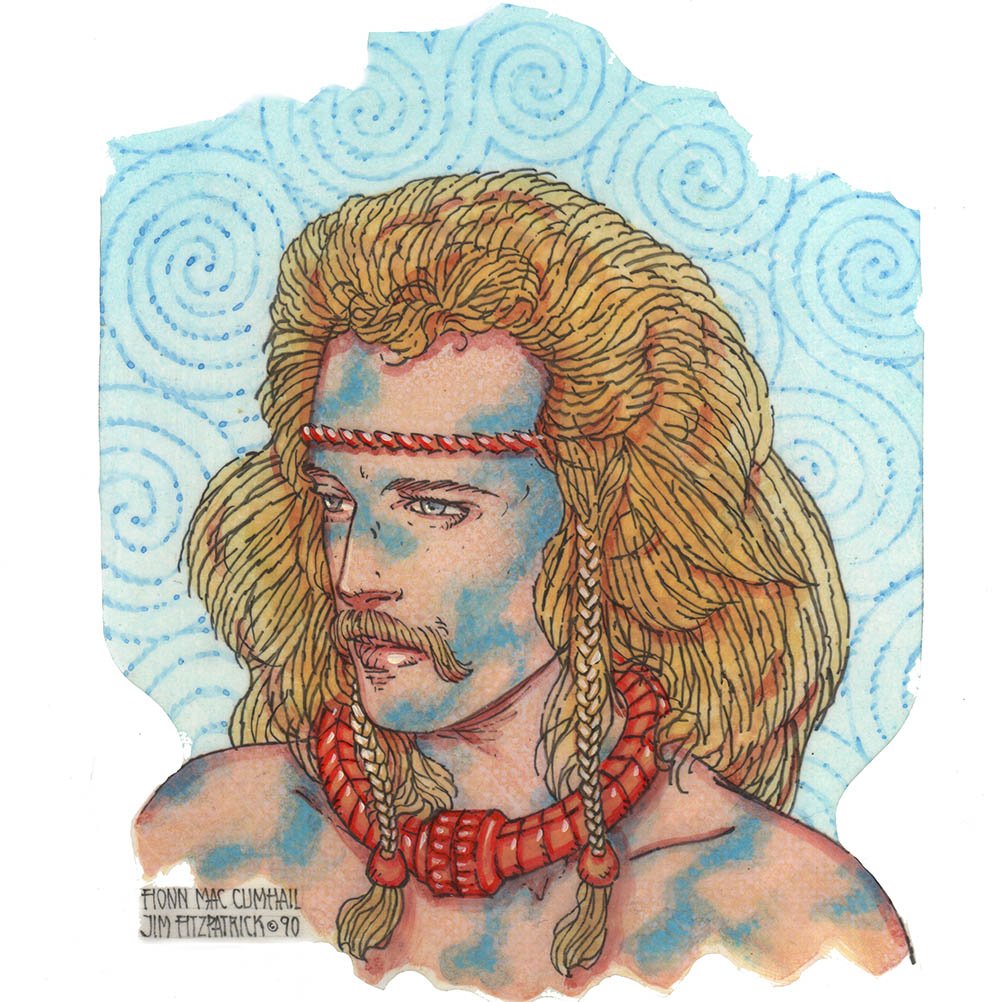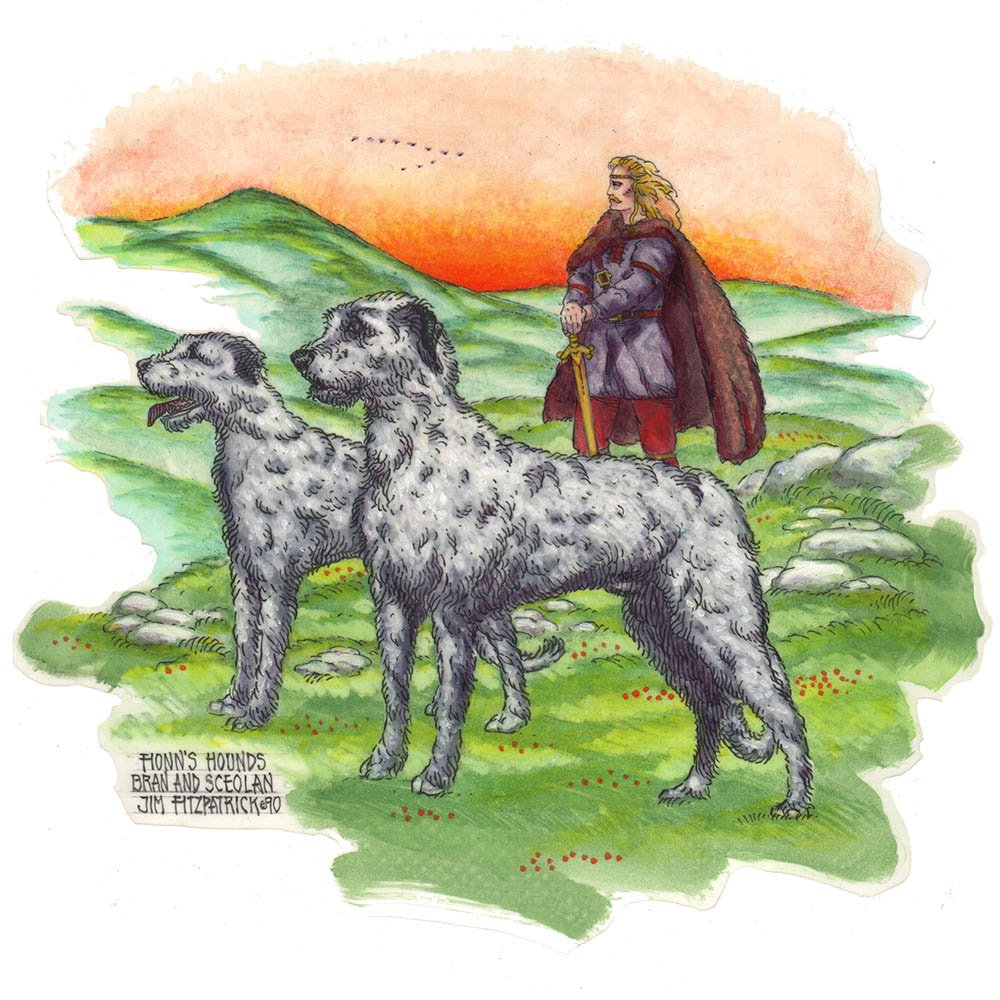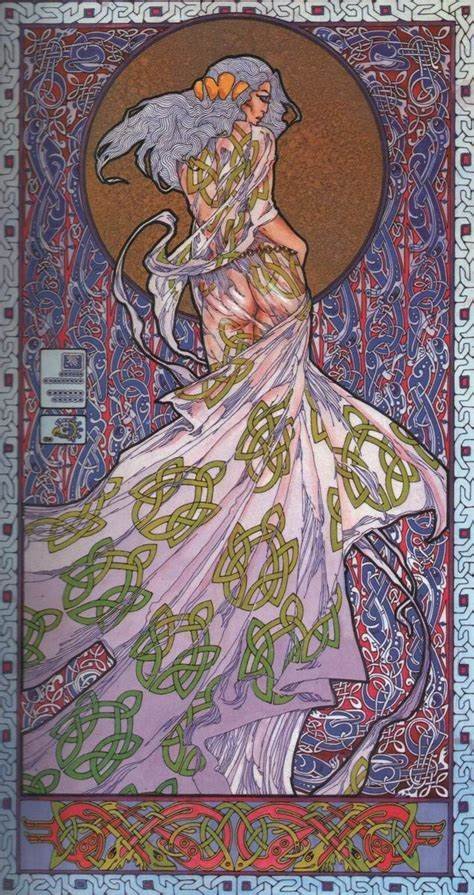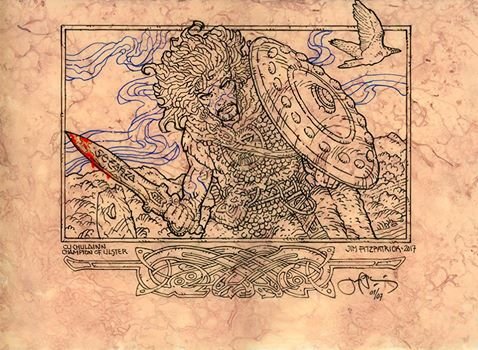Jim FitzPatrick's Beltaine Art
May Day, the first of May—as near as we can tell—has been a holiday in Western Europe for millennia. Called Beltane/Beltaine/Beltain in the lands of the Gael, it appears to have been connected in some way with the god Bel, an obscure member of the Gaelic pantheon. However, there was also a fairly major Gaulish deity named Belenos and the two are likely cognate, as are the Gaelic Nuada and the Brythonic ‘Nodens’.
I've done a fairly deep study of Beltaine and the other 'Celtic cross-quarter days' over the last thirty years. I'll go into that in future posts. For now, I'll just say that evidence of the observance of May Day/Beltaine extends as far east as Germany and Italy, if not further.
Ethan Sabatella is a Celtic Studies scholar I respect, along with him being an author of some of the best bloody Celtic fantasy out there. He just posted a fine blog entry on Beltaine in Irish Gaelic legends.
Considering the fact that I missed doing an 'Irish Art of Jim FitzPatrick' for Saint Patrick's Day this year, I thought it'd be fun to match up some of Jim's art with the events from Irish legend that Ethan mentions. Jim, as I keep pointing out, has depicted in ink and paint the entire history of Ireland--as the Irish see it.
Sabatella's post first cites the acquisition of the powers of poetry and prophecy by the young Fionn mac Cumhaill (Finn mac Cool) on Beltaine.
"Considering the story of Fionn’s youth concerns his passage into manhood and initiation into a Fenian warrior, this poem may indicate the young hero’s transition into a new period of his life. The contents of the poem are not merely bucolic images of springtime, but a collection of the elements that compose fíanaigecht (lore of the fíana), which usually involve hunting, warfare, and the natural world. It is, as well, an overall great example of Irish nature poetry and how Gaelic-speakers appreciated and found deep beauty in the natural world of their homelands."
FitzPatrick has never depicted that particular scene in the saga of Fionn to my knowledge, but he has depicted the Fenian more than once.
Jim painted this for a book cover about thirty years ago.
Next up are the fianna, what could be called 'the Irish Gaelic National Guard'. The very best warriors of Erin and servants of the High King, they spent the 'Dark Half' of the year quartered among the civilian population. When Beltaine came, they burst out of their winter quarters to hunt and roam the wild-lands of Ireland, living off the land. Robin Hood's 'Merry Men' turned into a praetorian guard', in a way.
Ethan Sabatella:
"According to legend, the fíanna (or Fenians) hunt and quest in the months between May 1st and November 1st, while the other half of the year is spent resting, feasting, and reveling indoors. Practically, the summer and late autumn seasons are ideal for roving the wilderness to find game and opportunities to gain glory in open combat or other quests. These stories are a favorite among traditional Gaelic communities to the point where my folklore professor in graduate school likened them as having similar cultural significance as superhero films do today. The act of telling stories about the fíana or singing lays related to them have their own sacred customs many tradition-bearers follow. For instance, storytellers may remove their hats as a sign of respect for Fionn and his men as they tell their tales. More significantly, it is customary to tell stories of the fíana during the months between November 1st and May 1st, and they can only be told at night."
FitzPatrick’s rendition of Conann of the Fianna. Jim named his own son ‘Conann’ partly as a tribute to the Fenian warrior—as Gaelic parents have for two thousand years—but also in tribute to Robert E. Howard’s proto-Gaelic hero, who was at that particular moment conquering pop culture.
Sabatella then brings up Cu Chullain's wooing of Emer. Emer lays out her romantic conditions. Part of them involve Beltaine. FitzPatrick has rendered Setanta/Cu Chullain and Emer several times, though it appears that his 'Son of the Sun' project--devoted to Cu Chullain and the Ulster Cycle--will never see completion, a truly saddening thing.
Sabatella:
"Beltaine as well may have been a chance for young men to show off feats of speed, strength, and agility to impress their female peers, which is also the case for Emer’s conditions for who is worthy to court her in the first place; Cú Chulainn ends up being the only man who can match her expectations for a partner after greatly maturing during his time with Scáthach."
A young Cu Chulainn, right around the time he began wooing Emer.
Emer, the object of Cu Chulainn’s desire.
Cu Chulainn, upon his return from the Isle of Scathach.
Sabatella:
"The month of May is referenced twice in “The Book of Invasions”, first when the Túatha dé dannan (the alleged pre-Christian gods of Ireland) invade Ireland: “[T]hey came to Ireland, on Monday, the kalends of May, in ships [and vessels]. And they burn[ed] their ships…” (Macalister trans., 1938). The act of burning the ships is usually interpreted as the Túatha dé refusing to surrender, but when we look at the date assigned to their landing and the fact that bonfires were utilized in Beltaine rituals, there could be some symbolism there of new beginnings or purification of the land and people to inhabit it through fire."
Jim FitzPatrick most certainly illustrated that arrival in The Book of Invasions. Following certain hints, Jim depicted the Tuatha’s ships as flying ships. Classic FitzPatrick art.
“The second mention of May comes during the section of “The Book of Invasions” when the Milesians or Gaelic people arrive in Ireland:
“The seventeenth, a Thursday, was found the battle-plain of warrior men, they took, in an attack on the land, on the kalends of May in the solar month.” (Macalister trans., 1938)
Strangely, FitzPatrick has created only one piece specifically for the Milesians/Goidels/Gaels. Here it is:
I hope all of you FitzPatrick fans have enjoyed this as much as I did putting it together.











